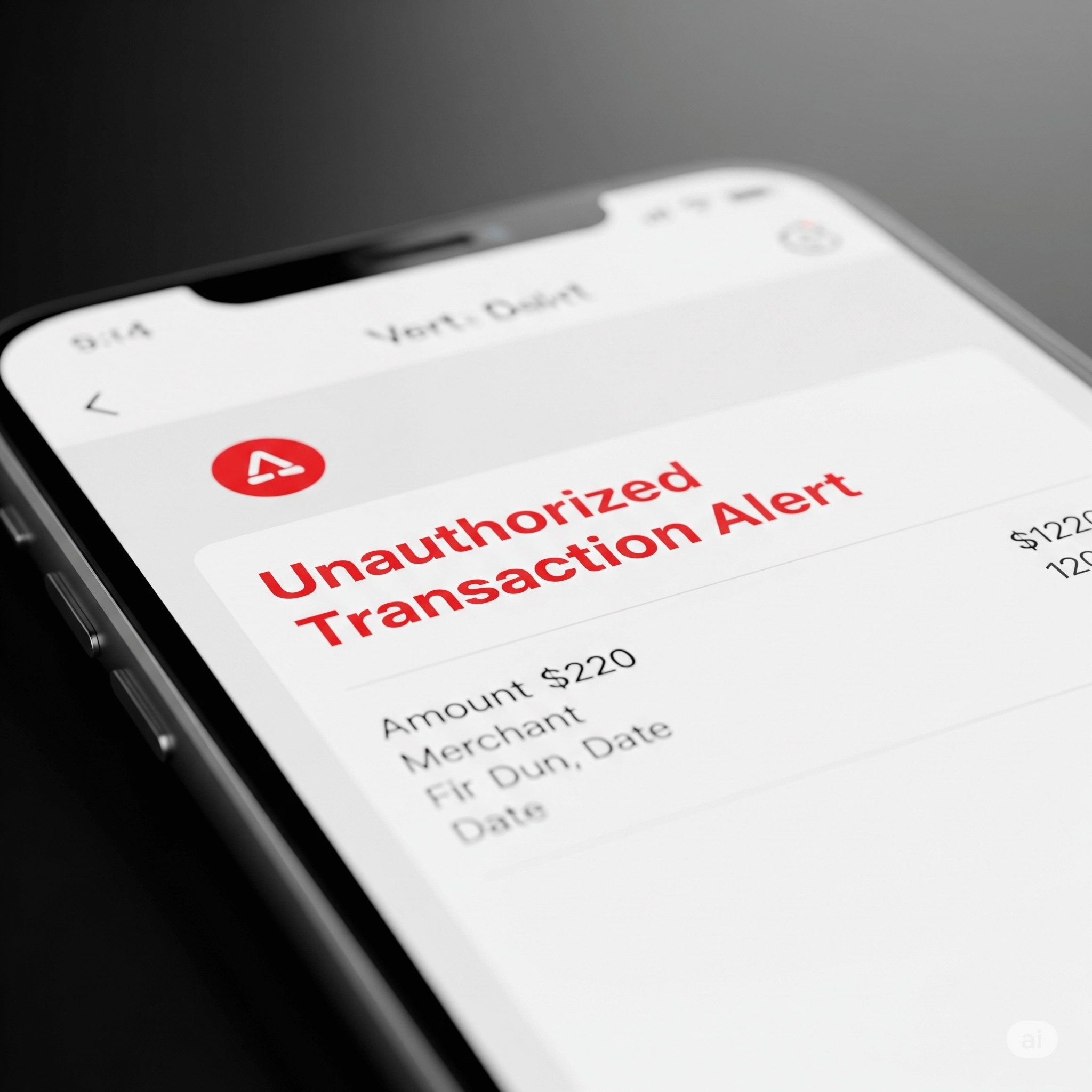Resolving an Unauthorized Transaction: Step-by-Step Guide for Canadians
Published on June 17, 2025 | By WealthFusions Finance Team

Discovering an unauthorized transaction on your bank or credit card statement can be alarming. In Canada, there are clear legal protections and procedures to help you recover your money swiftly. This article breaks down the exact steps to identify, report, and resolve unauthorized transactions, supported by real data, timelines, and expert advice. Whether it’s fraud, a billing error, or identity theft, we guide you through securing your finances and preventing future incidents.
1. Identify Unauthorized Transactions Quickly
Regularly review your bank statements and transaction history, ideally weekly. According to the Canadian Anti-Fraud Centre, fraud reports increased by 32% in 2024, making vigilance essential.
- Look for: transactions you don’t recognize, suspicious merchant names, duplicate charges, or unusual amounts.
- Check all accounts: savings, chequing, credit cards, and digital wallets.
2. Contact Your Financial Institution Immediately
Under the Canadian Payment Card Industry (PCI) guidelines, notify your bank or credit card issuer within 30 days of the transaction date to maximize protection.
- Use the customer service hotline (keep wait times under 5 minutes if possible).
- Request a transaction dispute or fraud claim form.
- Freeze or block your card/account if fraud is suspected.
3. Document Everything for Dispute Resolution
Keep detailed records:
- Transaction date, amount, and merchant details.
- Copies of emails, letters, or chat transcripts with your bank.
- Police reports if identity theft or criminal activity is involved.
Tip: In 2024, 68% of fraud victims who documented interactions resolved their claims faster (average 12 days vs 21 days).
4. File a Police Report if Necessary
If you suspect identity theft or criminal fraud, file a report with your local police or online where available. The Canadian Anti-Fraud Centre advises that police reports often help speed up investigations and insurance claims.
5. Monitor Your Credit Reports
After an unauthorized transaction, check your credit score and report from the two major bureaus:
| Credit Bureau | Free Annual Report | Website |
|---|---|---|
| Equifax Canada | Yes | equifax.ca |
| TransUnion Canada | Yes | transunion.ca |
Look for new accounts opened without your knowledge or unexpected inquiries.
6. Understand Your Liability and Legal Rights
Under Canada’s Consumer Protection Laws and FCAC guidelines:
- Consumers typically are not liable for losses after promptly reporting fraud.
- Liability can range from $0 to $50 if delay in reporting is proven.
- Banks must investigate and resolve disputes within 30 to 90 days.
7. Prevent Future Unauthorized Transactions
Steps to protect yourself:
- Use multi-factor authentication (MFA) on banking and payment apps.
- Set transaction alerts via SMS or email.
- Regularly update passwords; avoid reuse.
- Use virtual or one-time use credit card numbers if available.
- Be cautious of phishing emails and suspicious phone calls.
8. When to Escalate or Seek Legal Help
If your bank delays resolution beyond 90 days or denies your claim unfairly, consider:
- Contacting the Ombudsman for Banking Services and Investments (OBSI).
- Filing a complaint with the Financial Consumer Agency of Canada (FCAC).
- Seeking legal advice, especially for large losses or identity theft cases.
Summary & Next Steps
Unauthorized transactions are distressing but manageable if you act fast and stay organized. Review your accounts regularly, report suspicious activity immediately, and use all available tools to protect yourself. Your bank and Canadian law offer strong protections—but you must be proactive.
Visit WealthFusions today for advice on protecting your finances and navigating dispute resolutions smoothly.
Frequently Asked Questions
- 1. How long do I have to report an unauthorized transaction?
- Most banks require reporting within 30 days of the transaction date to limit your liability.
- 2. Will I lose all my money if someone steals my card info?
- No. If reported quickly, Canadian law protects you from losing more than $50, often $0 liability.
- 3. How long does it take to resolve disputes?
- Investigations typically take 30 to 90 days, depending on complexity.
- 4. What if the transaction was authorized but fraudulent?
- Contact your bank immediately. Some transactions made by scam victims can still be disputed.
- 5. Can I reopen a closed dispute?
- Yes, but provide new evidence. Contact your bank or OBSI if necessary.
- 6. Does the bank reimburse interest on disputed transactions?
- Yes, typically interest charges or fees related to unauthorized transactions are reimbursed.
- 7. What documents do I need when disputing?
- Transaction details, communication records, police reports (if applicable), and proof of identity.
- 8. How to protect myself from future fraud?
- Use MFA, update passwords regularly, monitor accounts, and stay alert to phishing attempts.
